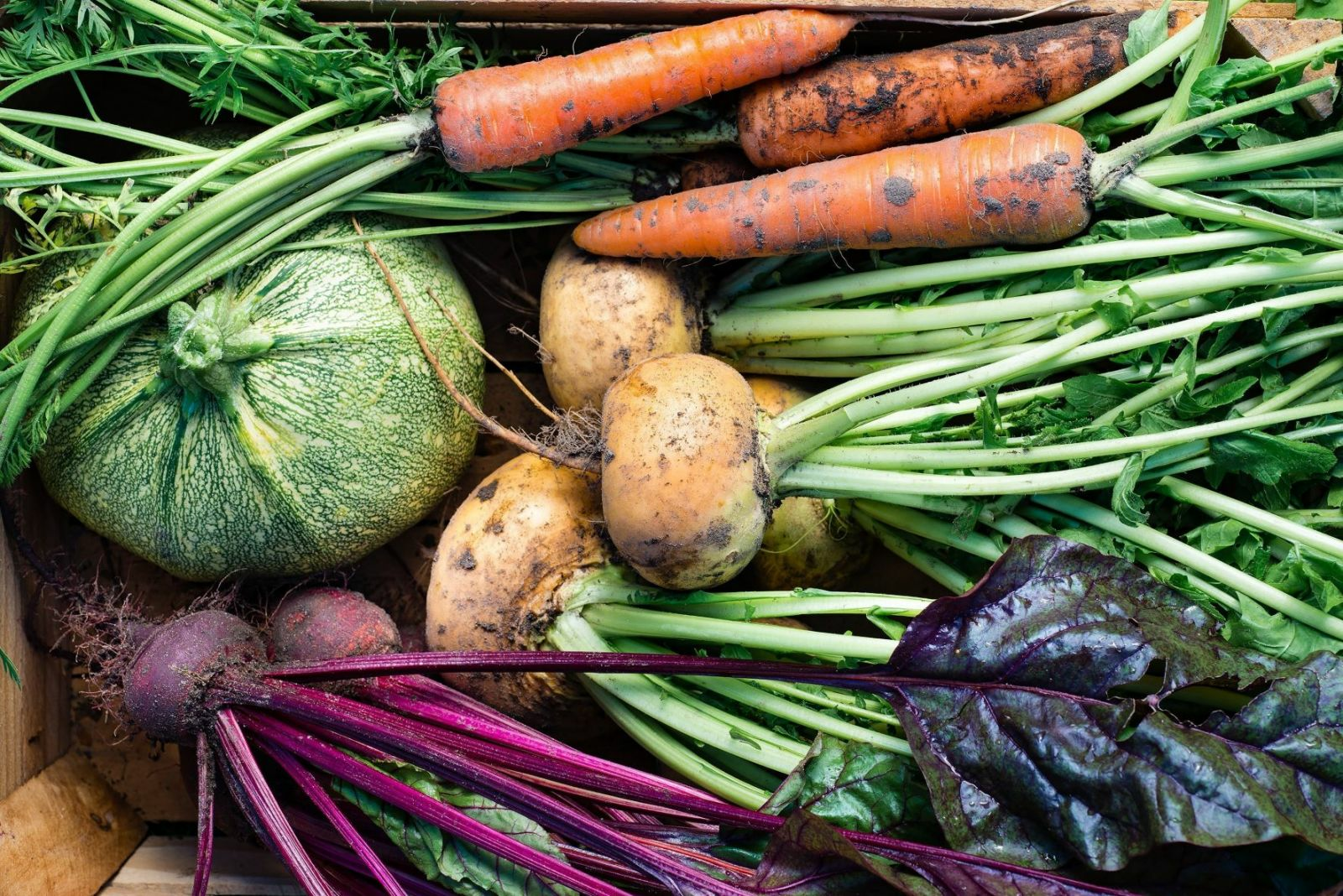Storing vegetables - earth mounds and other storage options
So you can look after yourself in winter!
There are a few things to bear in mind when storing root vegetables, onions, garlic, cabbage and pumpkins. Find out how to store your vegetables optimally so that you can provide yourself with your own vegetables all year round. We'll also show you how to create and use soil windrows!
General information
Not all vegetables can be preserved by canning, preserving, making jam or fermenting. However, many vegetables such as onions, garlic, pumpkins, cabbage and root vegetables can be stored well. This means you can also provide yourself with your own vegetables in winter. Root vegetables such as carrots, potatoes, beet, turnips and kohlrabi are great for storing in an earthen windrow. Onions and garlic should be dried and hung up. Pumpkins should be stored in a dark and cool room before they ripen, just like cabbage. More detailed information is provided in the individual sections.
Storing carrots
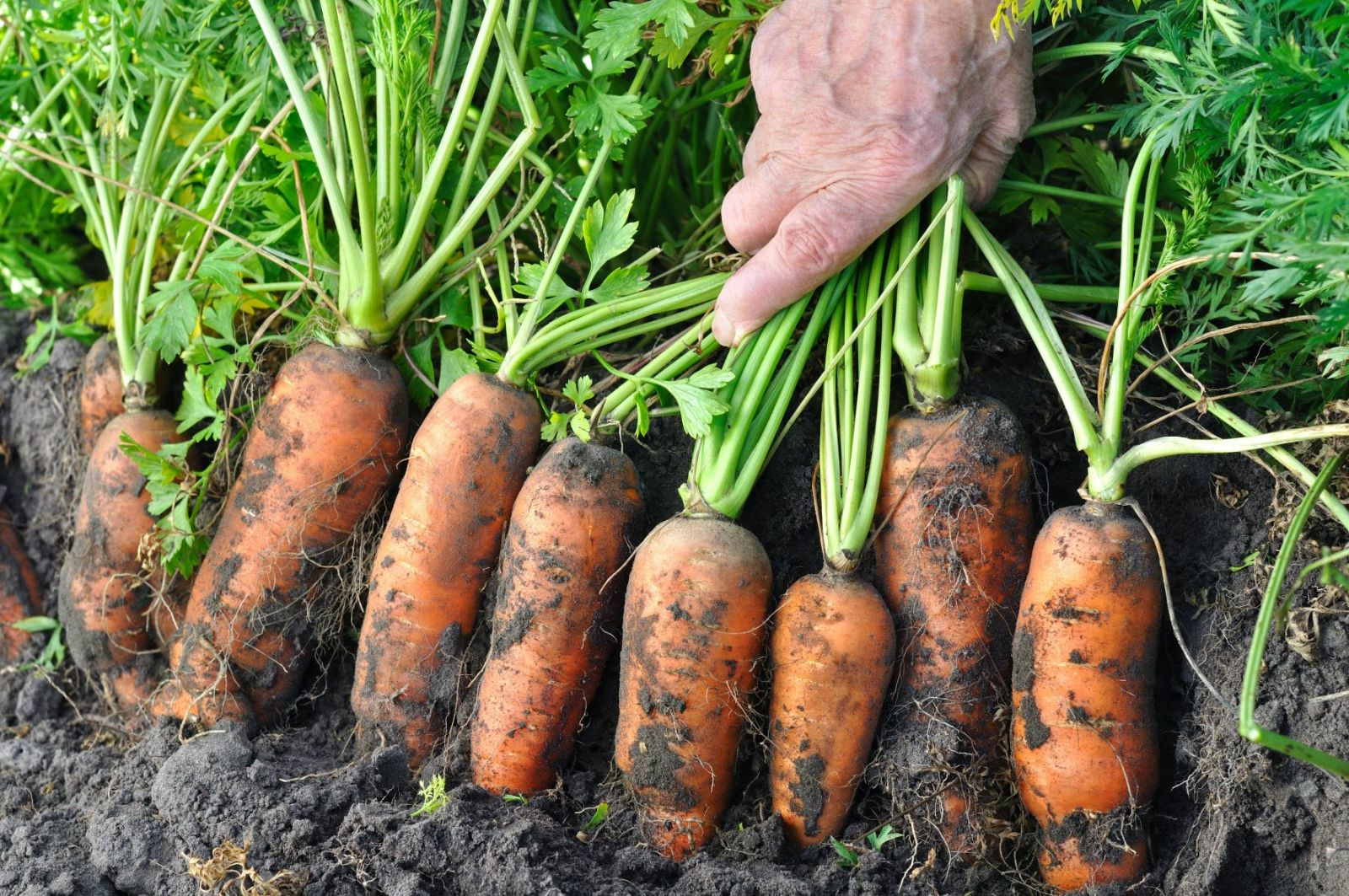
For storage, it is best to use late and storable varieties such as "Rodelika" or "Milan". You should also only select carrots without visible damage (cracks, spots, wounds). To store the carrots, layer them in a box with damp sand. Place this in a dark room with the lowest possible temperatures (approx. 2 - 5 ° C/35 - 41 ° F) and high humidity (80-90 %). A damp cellar or garden shed is suitable for this. Important: The sand in the box should not be too wet, as this can lead to rotting. Moisten the sand slightly by watering it if it loses moisture over time. Like other root vegetables, you can also store carrots in a soil box.
Storing potatoes
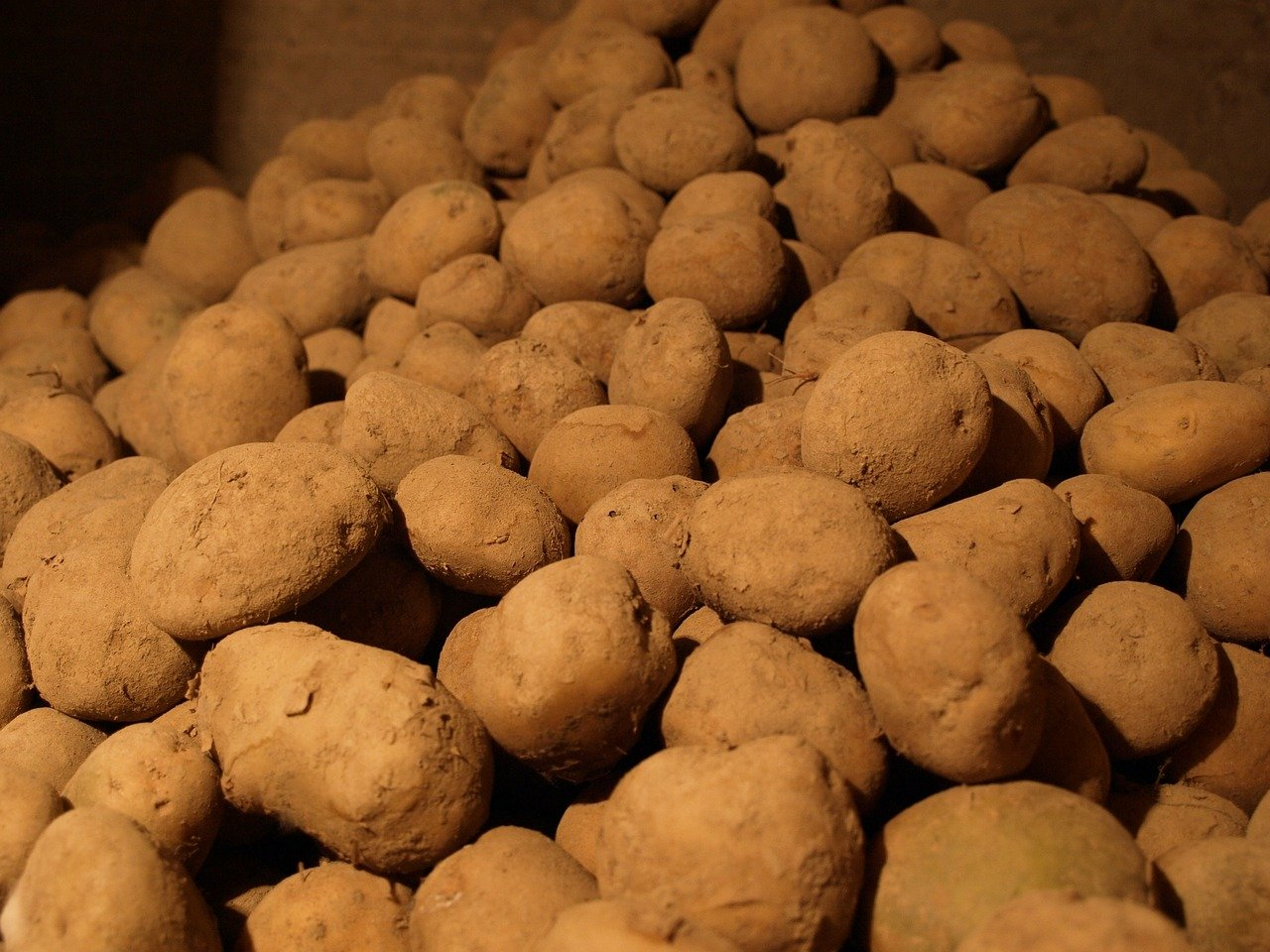
Potatoes can remain edible for many months if stored properly. You can find out how to do this in our article on storing potatoes correctly. Potatoes and other root vegetables can also be stored in a soil dugout.
Earth mounds for root vegetables - storage without a cellar
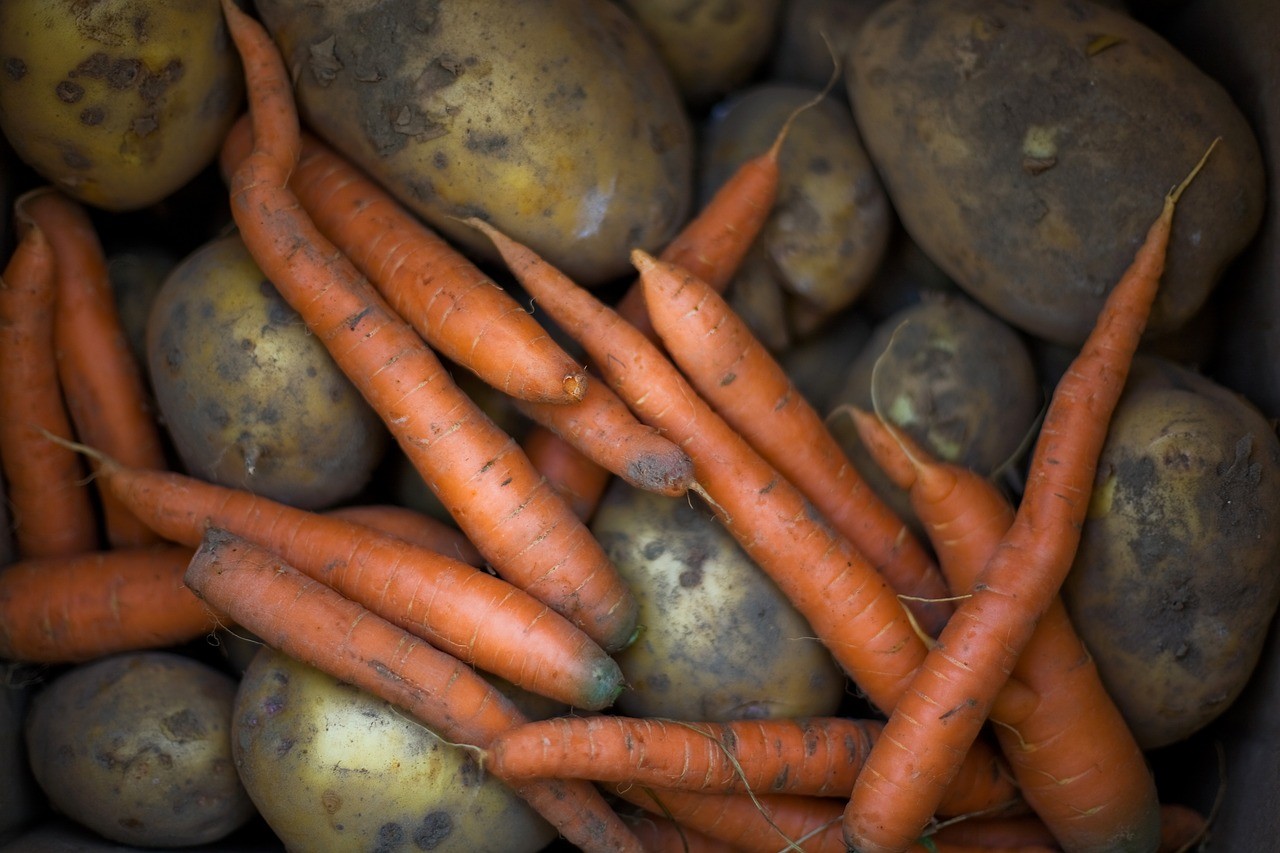
Earth mounds are storage locations dug into the ground where you can store vegetables. They not only offer optimal storage conditions for most root vegetables, but are also ideal for those who don't have a cellar or other storage space. The traditional way of storing vegetables is still in demand today! What's more, you can make your own earth pits with little effort and expense.
Build your own ground rent
In order to create an earthen bed, a pit approx. 50 cm/20 in deep must first be dug. A fine-meshed wire net lining the walls and base serves as protection against voles and other animals. Wooden boards can be attached to the sides for additional protection and stability. You can also dig a wooden box into the pit to serve as a container. However, it is important that the soil is water-permeable so that no water pools (risk of rotting!). Whether it is a crate or boards, the bottom of the earthen bed should be lined with a ten-centimetre-thick drainage layer of sand. Alternatively, you can also bury an old washing machine drum in the ground. To do this, use a drill to make lots of small holes in the bottom of the drum. A ten centimeter thick layer of sand is also required here as drainage.
Filling the earth mound
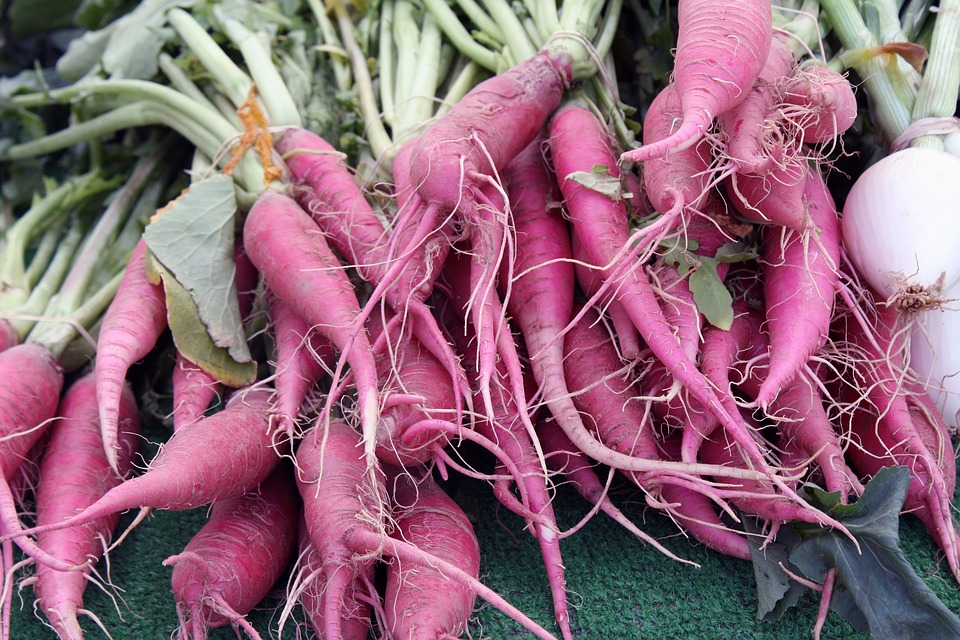
Fill your soil box with the root vegetables you want to store. The soil should only be roughly removed from the vegetables to keep them dry and preserve them for longer. You can easily put different root vegetables together here. Finally, cover the vegetables with a layer of straw at least 10 cm/4 in thick (preferably 20 cm/8 in). You should place a light wooden cover on top of the straw to protect it from too much rain and wind. A pallet or several thin boards are suitable for this. Cover this wooden cover with a plastic sheet to protect it from moisture. If you want to remove the vegetables, you can simply push the wooden cover to the side and remove the vegetables as required. The following vegetables can be placed in the soil windrow: Potatoes, carrots, beet, kohlrabi, turnips, celery, radish, parsley root, salsify, parsnips
Storing garlic
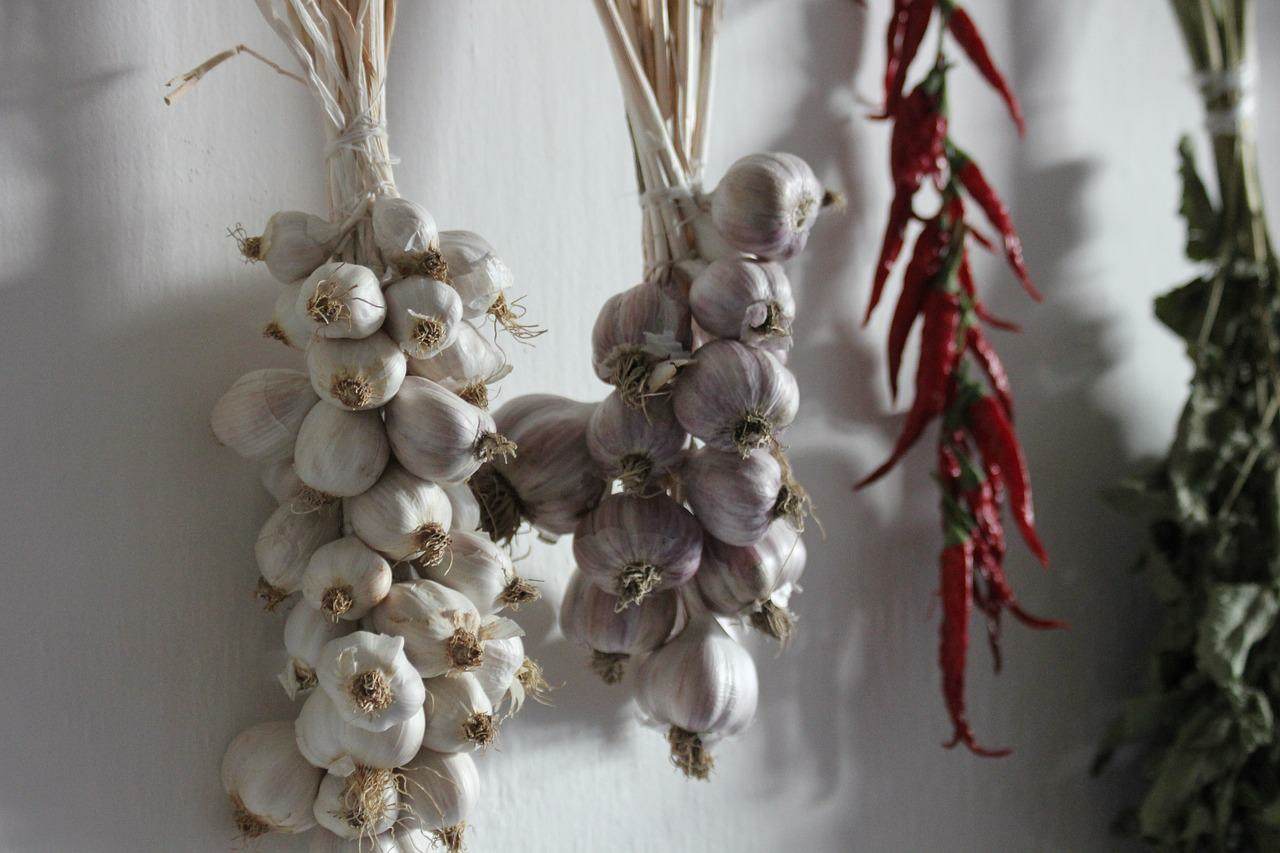
Garlic can be kept for between six and eight months in a dry, cool and dark place. If garlic is stored too warm (e.g. in the kitchen), the bulbs may sprout. Once sprouted, garlic loses its intense flavor and becomes mushy. It should therefore be eaten as soon as possible after sprouting.
Drying garlic
It is worth drying garlic before storing it. This keeps the bulb for longer. Do not wash the garlic beforehand, as this greatly increases the risk of mold growth and rotting. However, remove any loose skins from the bulb and tie several plants together by the stems. Caution: Do not remove the entire outer skin, as this protects against drying out! To dry, hang the tubers in bundles in a dry and covered place outdoors or indoors. After about two to three weeks, the dry leaves will begin to rustle. The garlic bulbs are now ready to be stored in a cool, dark and above all dry place (cellar).
Storing garlic

Caution: Garlic should not be stored in plastic bags! Garlic can be stored in containers such as special garlic pots made of clay or ceramic containers. The dry leaves (stems) are cut off for this purpose. A traditional way to store garlic is to braid garlic braids. The bulbs can then be hung up decoratively in a dry corner of the kitchen or pantry.
Storing onions
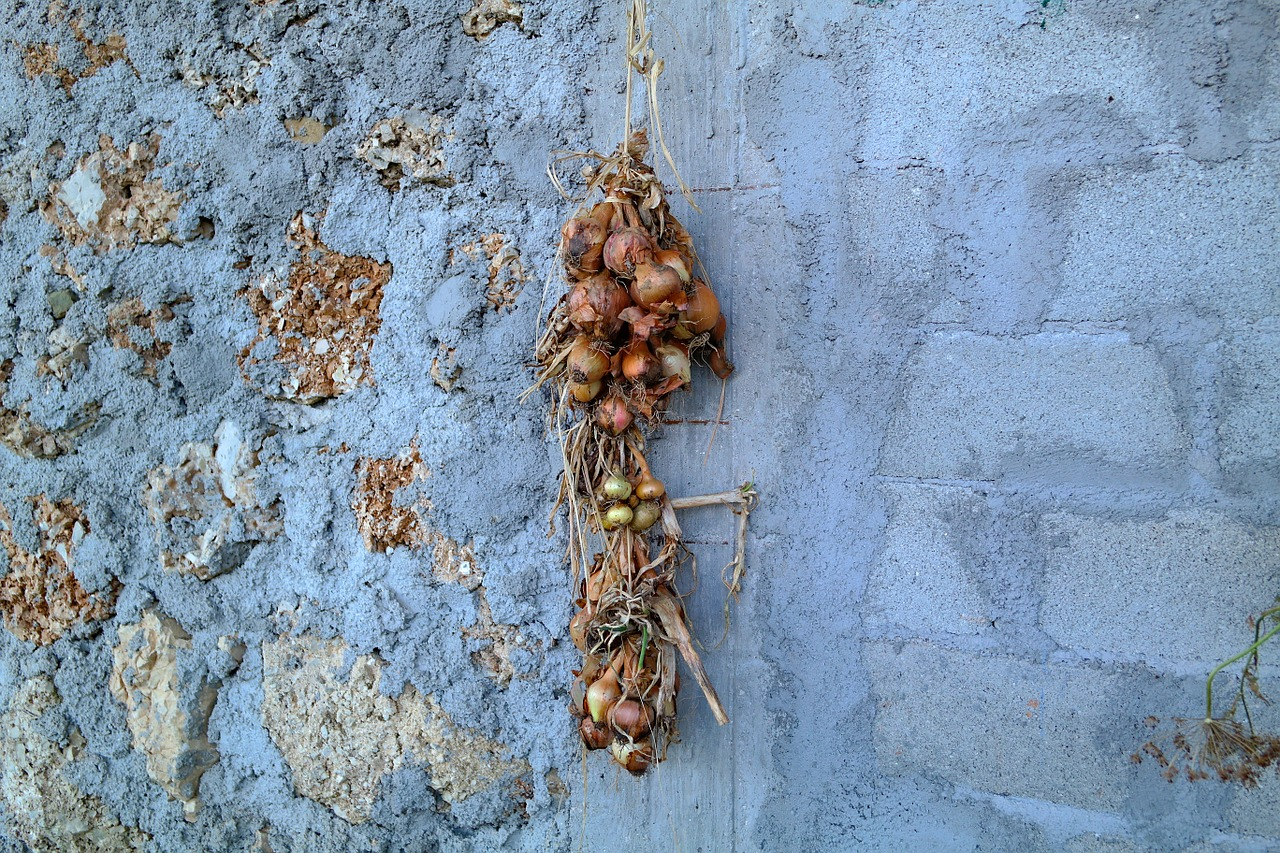
If you want to store onions, they should already be "pre-dried" in the field. This means that the leaves should already be folded over and dry on the ground before they are harvested. Before that, the onions are still too juicy. Like garlic, onions start to sprout if they are exposed to too much light and heat. Plastic bags are also not suitable for storing onions, as mold or rot will form in the damp environment. Onions can be stored for up to six months in cool, dry and dark conditions.
Allow the onions to ripen
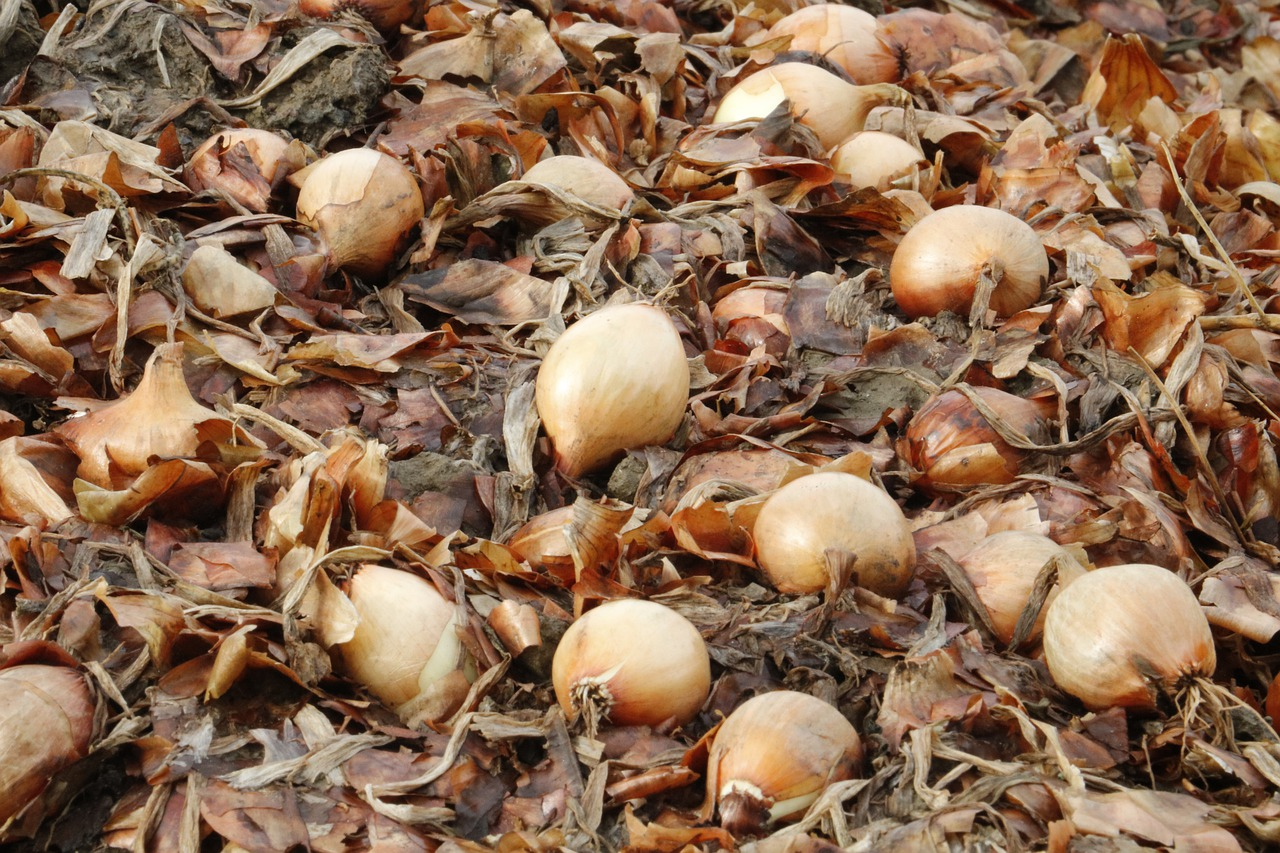
After harvesting, onions should be left to ripen for one to two weeks. This can be done directly in the field if the conditions are very dry. In damp weather, a shed or other covered area also offers a good opportunity to ripen and dry out.
Drying and storing onions
After ripening, onions must be dried. An airy, dry and dark place is suitable for this, such as a garden shed or a dark pantry. As with garlic, you can hang the onions up to dry by their leaves. Onion braids are particularly decorative and stable. Make sure that it doesn't get too hot, as the bulbs' protective skins will burst if they dry too quickly. Another option is to dry the onions in a wooden box. To do this, the onions should be kept as airy as possible so that no mold develops. The onions can then also be stored under these conditions.
Storing cabbage
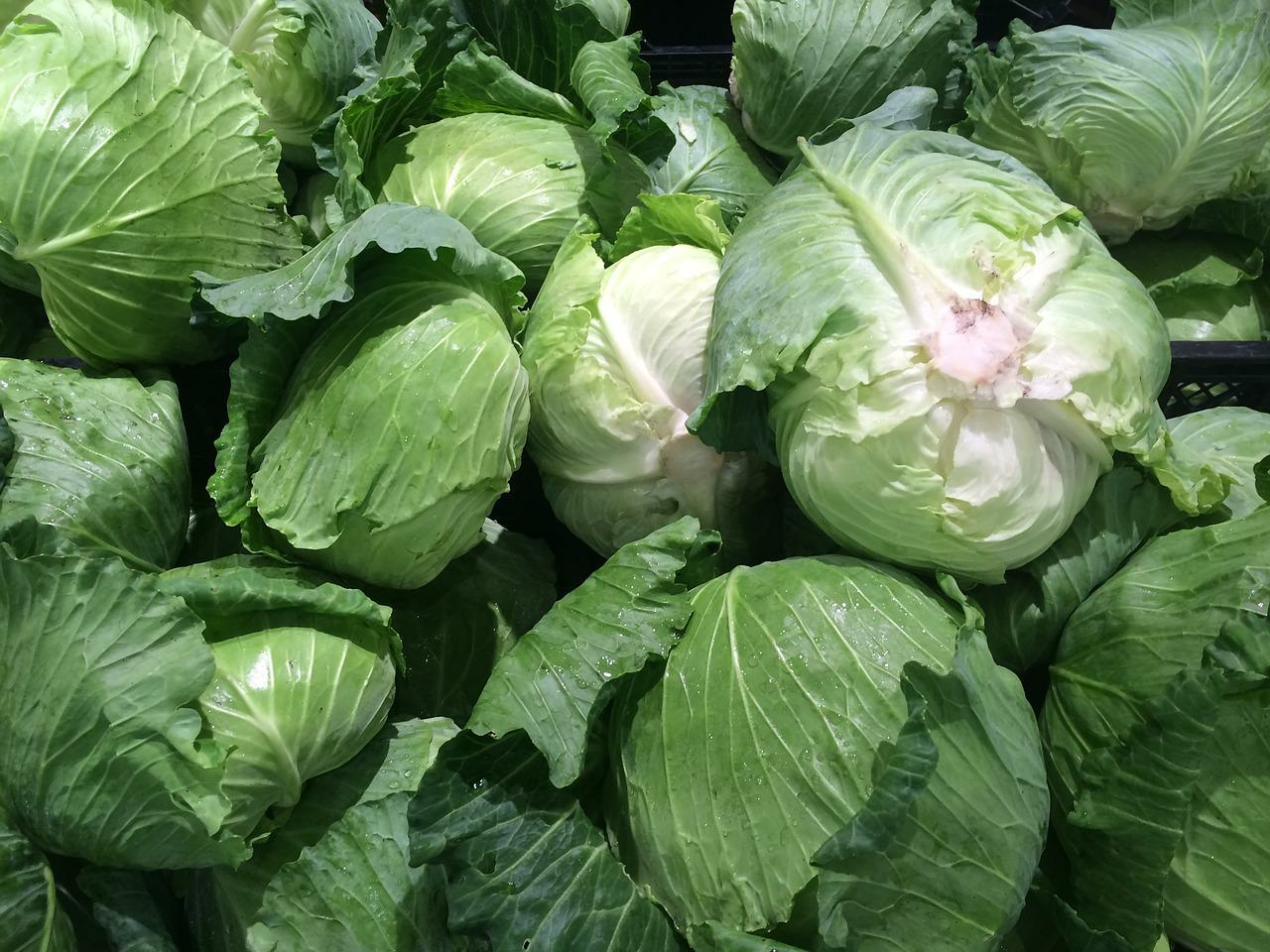
Heads of cabbage such as white cabbage or red cabbage can keep for several months if stored correctly. To do this, store the cabbages in a dark, cool pantry or in a cool cellar. You can either place the cabbage in boxes or attach a string to the stalk and hang the cabbage upside down. Storing upside down reduces the risk of storage rot. Kale, Brussels sprouts and black cabbage are better left to overwinter in the field and then harvested as and when required.
Storing pumpkin
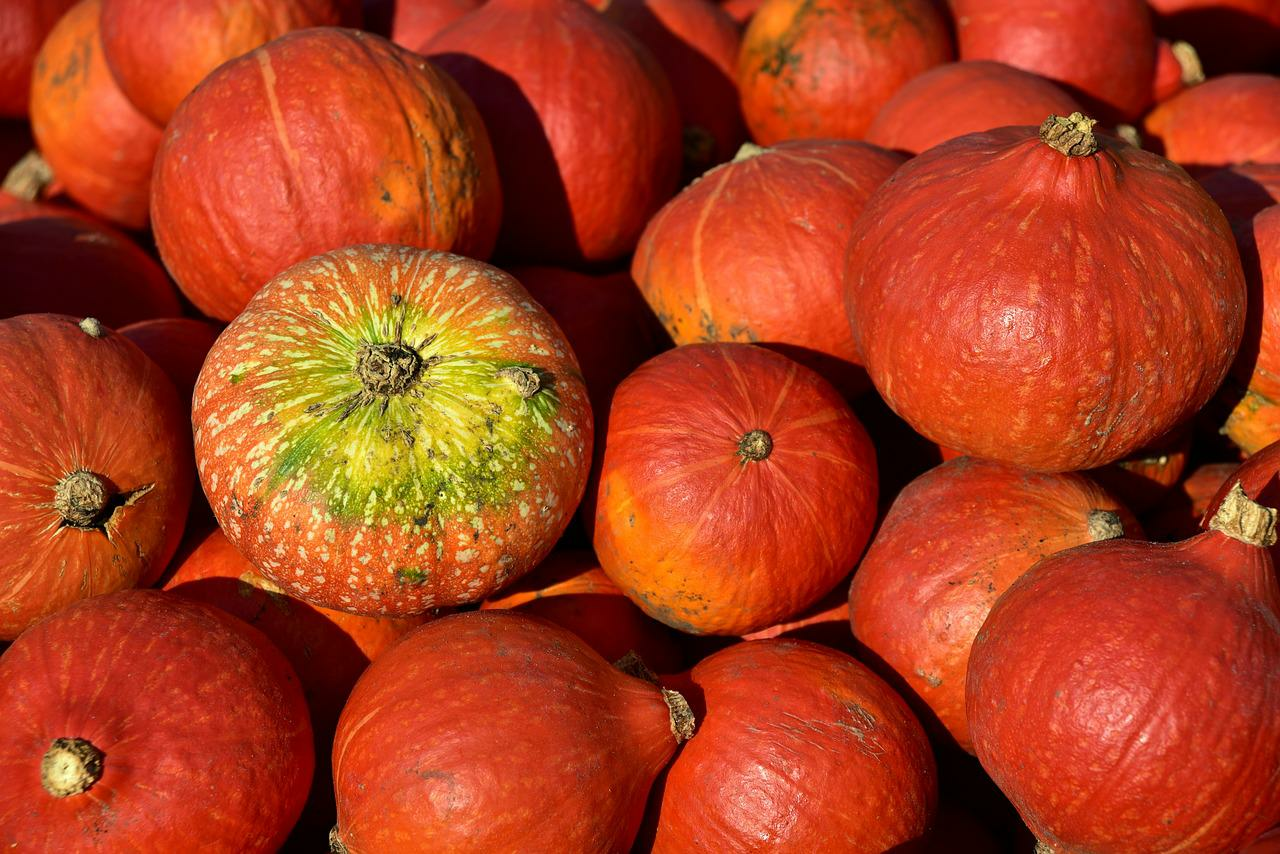
Undamaged pumpkins can be stored for several months, musk pumpkins even up to a year! It is important that you make sure you plant so-called "winter pumpkins". These varieties have a particularly hard skin that protects them from disease and drying out - making them perfect for storing throughout the winter. Here are the shelf lives of different winter pumpkin varieties:
- Hokkaido (5 - 6 months)
- Muscat pumpkin (8 months)
- Musk pumpkin (up to 1 year)
- Butternut pumpkin (3 months)
- Sweet dumpling (5 months)
- Spaghetti squash (8 months)
